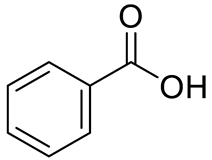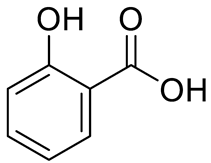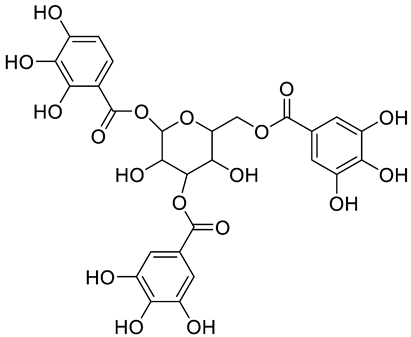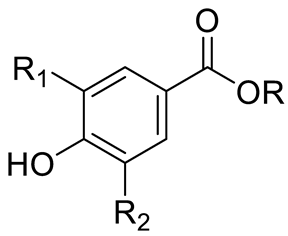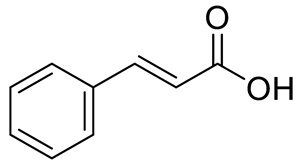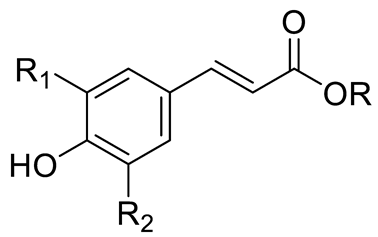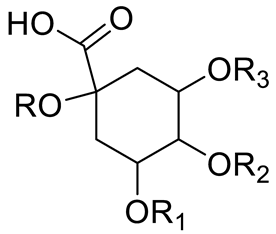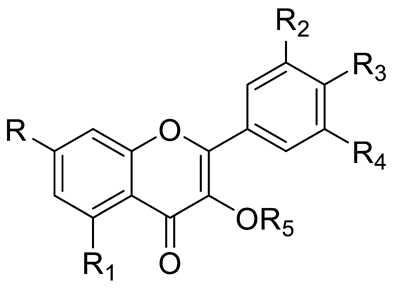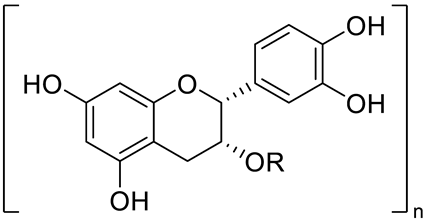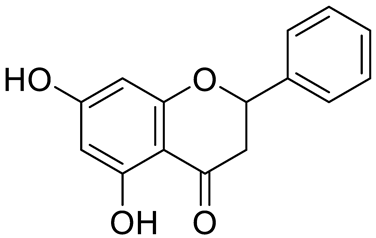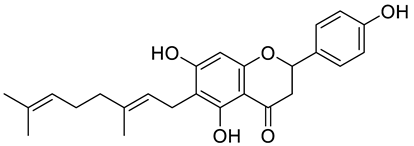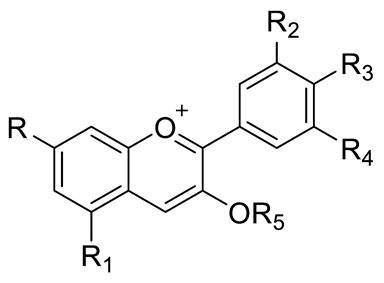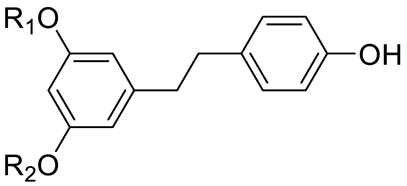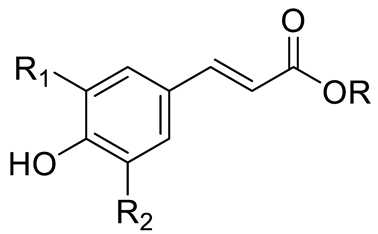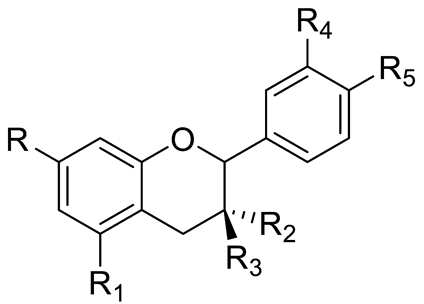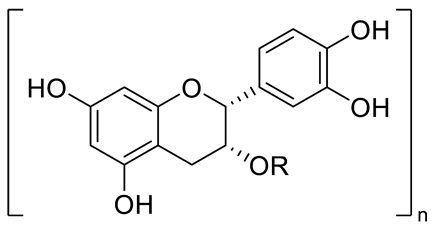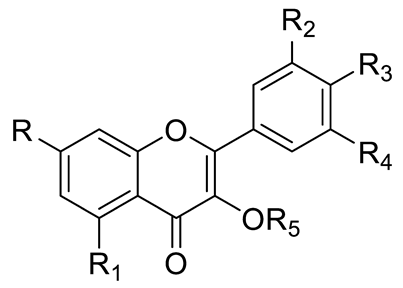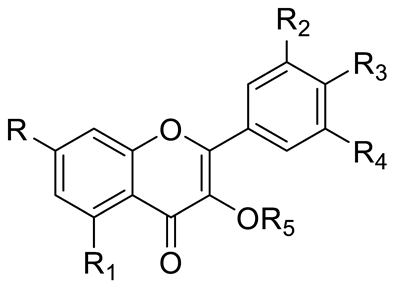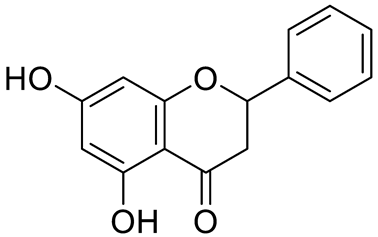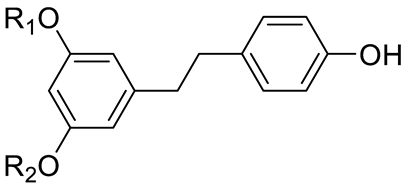Abstract
Corema (C.) album belongs to the family Ericaceae and can be found in the Iberian Peninsula, especially on the coastal areas facing the Atlantic coast. C. album berries have been used for centuries in traditional medicine. Recent studies have revealed that not only the berries but also the leaves have relevant antioxidant, antiproliferative, and anti-inflammatory properties, bringing this plant to the forefront of discussion. A systematic review of the literature was carried out to summarize the phenolic compounds and bioactive properties identified in C. album berries and leaves and to search for research gaps on this topic. The search was conducted in three electronic databases (PubMed, SCOPUS, and Web of Science) using PRISMA methodology. The inclusion criteria were the chemical compositions of the berries, leaves, or their extracts and their bioactive properties. The exclusion criteria were agronomic and archaeological research. The number of studies concerning phenolic compounds’ composition and the bioactive properties of C. album berries and leaves is still limited (11 articles). However, the variety of polyphenolic compounds identified make it possible to infer new insights into their putative mechanism of action towards the suppression of NF-kB transcription factor activation, the modulation of inflammatory mediators/enzymes, the induction of apoptosis, the modulation of mitogen activated protein kinase, cell cycle arrest, and the reduction of oxidative stress. These factors can be of major relevance concerning the future use of C. album as nutraceuticals, food supplements, or medicines. Nevertheless, more scientific evidence concerning C. album’s bioactivity is required.
Keywords:
plant; natural products; camarinha; antioxidant; polyphenols; anticancer; anti-inflammatory 1. Introduction
Plants as natural medicinal agents have been used since ancient civilizations to treat diseases such as cancer, inflammation, fever, etc. Their value as sources of molecules with therapeutic potential has been recognized and, recently, they have gained much attention in the drug discovery field, since many drugs from natural sources have been emerging, currently constituting up to 50% of all drugs in the pharmaceutical industry [1].
Corema belongs to the family Ericaceae and includes two species: Corema conradii and Corema album. The first is native to the Northwest coast of the USA and the latter can be found in the Iberian Peninsula, especially on the coastal areas facing the Atlantic [2]. In addition, Corema conradii differs from Corema album mainly by its very small fruit that lacks fleshiness and is covered with oily appendages [3]. Both species are coastal shrubs with sexual dimorphism. Concerning Corema album, this plant is a densely branched and long-living shrub with evergreen leaves [4]. While male flowers are bigger and have reddish petals and stamens with red-purple anthers, female flowers are smaller with pink-reddish petals [5]. Traditionally, the plant itself was also used in the Iberian Peninsula to make rustic brooms [6].
The berries from Corema album have been consumed for many centuries since the Islamic period (either fresh or in jams) and are employed in popular medicine [6,7]. In recent years, several reports have highlighted the health-beneficial properties of Corema album against several diseases, including cancer and neurodegenerative and cardiovascular diseases, and have ascribed most of their beneficial effects to their composition of phenolic compounds. Thus, this review is focused on unravelling the phenolic compounds already identified in Corema album with an emphasis on describing the biological mechanisms and signalling pathways related to their health-beneficial properties.
The species Corema album has two subspecies: Corema album azoricum, which is native to the islands of Azores, and Corema album album (C. album), which is more commonly found on the mainland [2]. The main difference between these two subspecies resides in its area of distribution: Corema album azoricum typically grows on volcanic lava or ash fields whereas C. album is characteristically found in coastal habitats [4].
C. album is an evergreen wild shrub that grows mainly on sandy soil over coastal dunes and cliffs, reaching a maximum height of 1 m, with numerous branches exhibiting leaves. Along the coast of Portugal, C. album is predominant on the southwest region from Sines to Troia and in the central-north region from Nazaré to Ovar [6]. The flowering of both female and male plants begins in early spring, from February to April [4]. The fruits are produced by the female plants and ripen in early summer (June and July) in the south and a little later (August and September) in the north [6]. The fruits are small, round berries coloured white or pink-white when ripe with an acidic flavour [8].
C. album has been used in traditional medicine and is one of the medicinal plants included in the herbarium of Francesc Bolòs (1773–1844) [9]. It has been described to exhibit beneficial properties against fever and intestinal pinworm infection [6,7], which is in accordance with the reported ability of C. album extracts to prevent oxidative damage [7]. Recently, the composition of each part of C. album has been studied by complementary Raman and infrared techniques, revealing vibrational signatures for the skin (outer and inner) and the seeds with distinct chemical compositions, specifically in its respective content in phenolic derivatives [10,11]. A systematic review of the literature was carried out to summarize the phenolic compounds and bioactive properties identified in C. album berries and leaves and to search for research gaps in this topic.
2. Methods
2.1. Search Strategy
PRISMA methodology was applied by performing a search for publications in three databases, namely, PubMed, SCOPUS, and Web of Science, using the following keywords: (“Corema album” AND (berries OR leaves)). The collection of papers was performed up to 15 June 2022. A total of 74 publications were identified after compiling all three databases. Duplicates, reviews, and opinion articles (n = 40) were removed.
2.2. Inclusion and Exclusion Criteria
The two authors of this publication independently screened the titles and abstracts of the 34 remaining articles. Inclusion criteria were studies focusing on chemical composition of berries, leaves, or their extracts and their bioactive properties. Exclusion criteria were agronomic and archaeological studies. Then, the full texts of eligible articles were carefully studied by all authors and the relevant data concerning phenolic compounds identified, C. album samples (berries, leaves, and extracts), and the bioactive properties studied were collected. In all steps, disagreements were resolved by meeting all authors and deciding on the inclusion or exclusion of the articles together.
3. Results
3.1. Literature Search Process
From the 74 records identified, only 34 remained for the title and abstract screening. The remaining reports were duplicated articles, reviews, or opinion articles (Figure 1). Then, 21 articles were excluded based on the title and abstract reviews because these studies involved agronomic or archaeological studies and did not include the chemical composition of the berries, leaves, or of the respective extracts. The remaining 13 papers proceeded to the full text review. From those, only 11 were about phenolic compounds’ identification in C. album; thus, they were considered eligible for the data extraction [7,10,11,12,13,14,15,16,17,18,19].
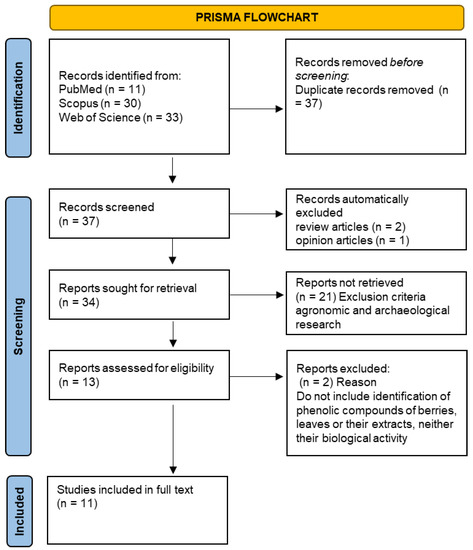
Figure 1.
Flowchart summarizing the literature selection process according to PRISMA methodology.
3.2. Phenolic Compounds in Berries and Leaves from C. album
Both berries and leaves from C. album revealed a rich content in several phenolic compounds, which are summarized in Table 1 and Table 2, respectively. The phenolic compounds were divided into three main groups, namely, phenolic acids, flavonoids, and stilbenes, according to their structural similarities. Phenolic acids are commonly divided into two groups: the benzoic acids (C6-C1) with seven carbon atoms and cinnamic acids (C6-C3) with nine carbon atoms. Usually, these compounds occur predominantly in their hydroxylated forms: hydroxybenzoic and cinnamic acids, respectively. Flavonoids present a basic structure with 15 carbon atoms distributed by two aromatic rings linked by a three-carbon chain (C6-C3-C6). Stilbenes are known to display a structure with two aromatic rings linked by an ethene bridge.

Table 1.
Phenolic compounds identified in C. album Berries.

Table 2.
Phenolic compounds identified in C. album leaves.
Moreover, and in accordance with previously described features [20], natural phenolic acids, free or conjugated, can also appear as amides or esters whereas natural flavonoids, free or conjugated, are often esterified to one or two sugar molecules (by one or more hydroxyl groups).
In C. album leaves, another three predominant compounds were identified: 2′,4′-dihydroxydihydrochalcone, 2′-methoxy-4′-hydroxydihydrochalcone [17], and 2′,4′-dihydroxychalcone [18] (Figure 2). These compounds are chalcones, which are intermediates in the biosynthesis of flavonoids and isoflavonoids [19].
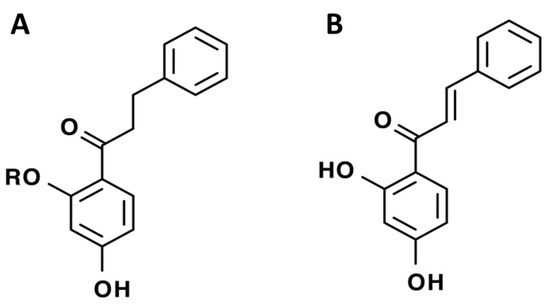
Figure 2.
Structure of identified chalcones in C. album: (A) R = OH, 2′,4′-dihydroxydihydrochalcone, R = OCH3, 2′-methoxy-4′-hydroxydihydrochalcone; (B) 2′,4′-dihydroxychalcone.
Both the berries and leaves from C. album revealed interesting bioactive properties, which are summarized in Figure 3. Scientific information regarding C. album’s bioactive activities is very scarce and is mostly focused on the beneficial healthy properties of its berries. C. album berries were described to have antimicrobial [11] and antioxidant activities [7,11,14,15]. Moreover, this antioxidant activity seems to be increased after simulated digestion [13] and can protect against oxidative stress (yeast: [13]). C. album berries have also been described as having cytotoxic effects in Caco-2 cells when the concentration of the extract exceeds 8% [14]. There is also evidence that these berries are able to inhibit lipid peroxidation and acetylcholinesterase activation [11].
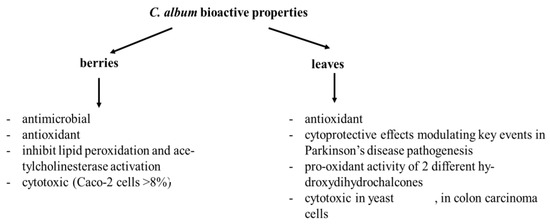
Figure 3.
Summary of bioactive properties found in the literature for C. album berries, leaves, or their extracts.
The bioactivity of C. album leaves has been studied regarding its cytotoxicity in yeast [15,20]; colon carcinoma cells (HT-29 cells: [17]), an effect that seems to be mediated through G2/M cell cycle arrest [18,21]; and apoptosis [18]. The cytotoxicity observed was reported to be triggered by the pro-oxidant activity of at least two different hydroxydihydrochalcones found in these leaves [17]. In contrast, a study using an enriched fraction of polyphenols from C. album leaves claimed that this extract has promising cytoprotective effects, modulating key events in Parkinson’s disease pathogenesis. Some other reports also describe C. album leaves as having antioxidant effects [15,20].
4. Discussion
A wide variety of phenolic compounds were identified in the berries and leaves from C. album, but few studies explore the biological activities and signalling events triggered by their extracts. Nevertheless, their physical–chemical profile and high phenolic content supports a potential market expansion [22]. In particular, their enriched composition in phenolic compounds, both in the berries and leaves, bring valuable insights into their putative mechanism of action. Currently, it is well accepted that phenolic compounds can modulate the activity of several enzymes, kinases, and transcriptional factors involved in the modulation of biological processes such as oxidative stress, inflammation, cell proliferation, apoptosis, and cell death [21,23]. In accordance, the phenolic compounds previously identified in C. album berries and leaves are known to present a modulatory capability in several signalling pathways, signal mediators or enzymes, and/or kinases (Table 3 and Table 4). Thus, these mechanisms can be indirectly associated with C. album.

Table 3.
Protective mechanisms ascribed to phenolic compounds identified in C. album berries.

Table 4.
Protective mechanisms ascribed to phenolic compounds identified in C. album leaves.
Note that the phenolic compounds may exert their biological effects through signalling pathways separately or in a sequential way. Moreover, a putative crosstalk between these pathways should not be overlooked.
4.1. Suppression of NF-kB Transcription Factor Activation
The nuclear factor kappa-light-chain-enhancer of activated B-cells (NF-κB) is a transcription factor involved in the regulation of the expression of several genes that are associated with inflammation and carcinogenesis. NF-κB, in the cytosol, is inactive since it is bound to inhibitor kB (IkB) [83]. When IκB is phosphorylated, NF-κB is free to be translocated to the nucleus and can activate genes such as p53, Myc, and other cellular genes [21,83]. Present in C. album berries, neochlorogenic [37,39,40], p-hydroxybenzoic [24], and ferulic [28,29] acids seem to be able to inhibit NF-κB activation. In addition, several flavonols such as catechins [66,67,68,69], quercetin rhamnosyl hexoside [78,79,80], myricetin [74,75], procyanidins [72,73] and kaempherol hexoside [76], identified in C. album leaves have been shown to suppress NF-κB transcriptional activity and, thus, can prevent inflammation and carcinogenesis.
4.2. Modulation of Inflammatory Mediators/Enzymes
All the phenolic acids identified in C. album berries present anti-inflammatory properties since they inhibit the production of several interleukins (IL-1β and IL-6) and TNF-α (Table 3). The following activities were reported in the leaves of C. album: some polyphenols, such as catechins, were shown to inhibit IL-6, IL-12, and IL-1α; IL-1β, TNF-α production [67,68]; procyanidins, shown to inhibit IL-1β and TNF-α expression [72]; quercetin rhamnosyl hexoside, which decreased the expression of TNF-α, IL-1β, IL-6, and IL-17 [78,81,82]; kaempherol hexoside, which suppressed TNF-α, IL-1β, and IL-6 generation [77]; myricetin, which reduced TNF-α, IL-12, and IL-6 expression [74]; and rhamnetin, which reduced TNF-α, IL-1β, IL-6, and IL-8 generation [84]. In addition, other compounds were identified in the leaves such as chalcone derivatives that inhibited the production of cytokines [85]; isoliquiritigenin and butein that inhibited lipopolysaccharide (LPS)-induced inducible nitric oxide synthase (iNOS); and cyclooxygenase-2 (COX-2) expression [86], contributing to the modulation of inflammation.
In the inflammatory process, enzymes such as COX-2 and xanthine oxidase (XO) play a key role, and their levels of expression are modulated during the inflammation’s progression. The polyphenols identified in the berries of C. album were shown to be capable of suppressing/reducing the activity of XO and/or COX-2: through phenolic acids such as chlorogenic [37] or p-hydroxybenzoic [24] acids or by flavonols such as quercetin-3-O-hexoside [48].
4.3. Induction of Apoptosis
Apoptotic regulation involves numerous proteins such as families of p53, bcl-2-like protein 4 (BAX), and caspases [23]. Several flavonols identified in C. album berries seem to be able to induce apoptosis: anthocyanins, such as delphinidin-3-O-hexoside can induce apoptosis by modifying BAX, caspase 3, and Bcl-2 proteins [64]; quercetin-3-O-hexoside seems to be able to promote apoptosis, enhancing the expression of p53 and BAX proteins [46]; and kaempherol-3-O-hexoside was associated with the induction of apoptosis through the upregulation of caspase 3 and the downregulation of Bcl-2 [41,43,44]. Another flavonoid identified in C. album leaves, pinocembrin, was reported to be able to induce apoptosis in many different types of cancer cells [87].
4.4. Modulation of Mitogen Activated Protein Kinase
Since mitogen-activated protein kinase (MAPK) pathways are a convergent avenue involved in numerous biological processes, changes in MAPK activity are of utmost importance. p-coumaric acid has been demonstrated to have both antioxidant and anti-inflammatory properties since it is capable of preventing oxidative stress-induced apoptosis in human epithelial cells through the modulation of the MAPK signalling pathway [88]. Other phenolic acids identified in C. album berries, such as ferulic acid [28,29], p-hydroxybenzoic acid [24], and neochlorogenic acid [36,40], can also prevent MAPK activation. In the leaves, some polyphenols have also been reported to exert modulatory effects on MAPK pathways, including quercetin rhamnosyl hexoside [79] and procyanidins [73].
4.5. Cell Cycle Arrest
The deregulation of the cell cycle is associated with carcinogenesis and phenolic compounds are known to be capable of inhibiting, in a variety of cell types, different cell phases (G1, S, S/G2, and G2) [21,89]. C. album flavonols, identified in the berries, are capable of changing the cell cycle; kaempherol-O-hexoside causes cell cycle arrest at G2 [43,45] while rutin (a quercetin derivative) induces G2/M cell cycle arrest [54].
4.6. Zeduction of Oxidative Stress
The antioxidant properties ascribed to C. album seem to be mediated by an upregulation of glutathione and cellularly antioxidant enzymes, as well as by the suppression of reactive oxygen species (ROS) generation [90,91]. Indeed, berries usually exhibit an enriched content of phenolic compounds commonly associated with their high antioxidant properties [15]. Such properties are also exhibited by C. album berries since they have an anthocyanin content that can inhibit the intracellular content of ROS [63,64,65]. In these berries, gallic acid, chlorogenic acid derivatives, and flavonols have also been identified as having antioxidant properties [15,24,51,53].
Some compounds identified in the leaves of C. album also have antioxidant properties: myricetin derivatives [74,75], reported as a modulator of nitric oxide (NO) generation and of iNOS activity; stilbene derivatives [92]; and prenylated chalcone glycoside, which showed radical scavenging activity [93].
5. Conclusions and Future Perspectives
Although a wide variety of phenolic compounds have been identified in the berries and leaves from C. album, at the time of this review (15th Jun 2022), there are scarce scientific data regarding the potential health benefits exerted by C. album. Only nine studies have evaluated the biological properties of the berries, leaves, or respective extracts of this plant. Nevertheless, the discussion section evidences that their rich composition in phenolic compounds is promising when considering their health benefits and therapeutic potential. The phenolic compounds identified in C. album leaves and berries can modulate several pathophysiological processes, namely, inflammation, oxidative stress, carcinogenesis, etc., and this plant may also be attractive to the pharmaceutical industry with respect to generating new drug(s), nutraceuticals, or supplements, but more scientific evidence concerning C. album’s bioactivity is required.
Author Contributions
Conceptualization: C.D., M.V., R.R.-O. and J.B.S.; writing—original draft preparation, C.D., M.V., A.S.C. and O.V.; writing—review and editing, C.D., M.V., J.B.S., A.S.C., R.R.-O. and I.M.P.L.V.O.F.; funding acquisition, I.M.P.L.V.O.F. and C.D. All authors have read and agreed to the published version of the manuscript.
Funding
The Portuguese Foundation for Science and Technology (FCT) is acknowledged for UIDB/QUI/50006/2020, and Portugal 2020—POCI-01-0145-FEDER-029305, IDEAS4life—Novos IngreDiEntes Alimentares de Plantas MarítimaS (jointly financed by the European Community Fund and FEDER).
Institutional Review Board Statement
Not applicable.
Informed Consent Statement
Not applicable.
Data Availability Statement
Data sharing not applicable.
Acknowledgments
Martin Vojtek thanks the Portuguese Foundation for Science and Technology (FCT) and the PhD Program in Medicines and Pharmaceutical Innovation (i3DU) for PhD Grant PD/BD/135460/2017, funded by the European Social Fund of the European Union and national funds FCT/MCTES. Rita Ribeiro–Oliveira thanks the Portuguese Foundation for Science and Technology (FCT) for PhD Grant SFRH/BD/146243/2019 funded by the European Social Fund of the European Union and national funds FCT/MCTES through the Norte’s Regional Operational Programme. The authors thank Maria do Céu Pereira e Mónica Caldas for their technical assistance.
Conflicts of Interest
The authors declare no conflict of interest.
References
- Newman, D.J.; Cragg, G.M. Natural products as sources of new drugs over the 30 years from 1981 to 2010. J. Nat. Prod. 2012, 75, 311–335. [Google Scholar] [CrossRef] [PubMed]
- Andrade, S.C.; Gonçalves, F.; Guiné, R. Contribution for the physical-chemical characterization of Portuguese Crowberry (Corema album). Int. J. Food Sci. Nutr. 2017, 2, 9–14. [Google Scholar]
- Martine, C.T.; Lubertazzi, D.; Dubrul, A. The biology of Corema conradii: Natural history, reproduction, and observations of a post-fire seedling recruitment. Northeast. Nat. 2005, 12, 267–286. [Google Scholar] [CrossRef]
- Guitián, P.; Medrano, M.; Rodríguez, M. Reproductive biology of Corema album (L.) D. Don (Empetraceae) in the northwest Iberian Peninsula. Acta Bot. Gall. 1997, 144, 119–128. [Google Scholar] [CrossRef][Green Version]
- Zunzunegui, M.; Barradas, M.D.; Clavijo, A.; Cansino, L.A.; Lhout, F.A.; Novo, F.G. Ecophysiology, growth timing and reproductive effort of three sexual foms of Corema album (Empetraceae). Plant Ecol. 2006, 183, 35–46. [Google Scholar] [CrossRef]
- de Oliveira, P.B.; Dale, A. Corema album (L.) D. Don, the white crowberry—A new crop. J. Berry Res. 2012, 2, 123–133. [Google Scholar] [CrossRef]
- León-González, A.J.; Mateos, R.; Ramos, S.; Martín, M.Á.; Sarriá, B.; Martín-Cordero, C.; López-Lázaro, M.; Bravo, L.; Goya, L. Chemo-protective activity and characterization of phenolic extracts from Corema album. Food Res. Int. 2012, 49, 728–738. [Google Scholar] [CrossRef]
- López-Dóriga, I.L. The archaeobotany and ethnobotany of Portuguese or white crowberry (Corema album (L.) D. Don). Ethnobiol. Lett. 2018, 9, 19–32. [Google Scholar] [CrossRef]
- Gras, A.; Garnatje, T.; Ibáñez, N.; López-Pujol, J.; Nualart, N.; Vallès, J. Medicinal plant uses and names from the herbarium of Francesc Bolòs (1773-1844). J. Ethnopharmacol 2017, 204, 142–168. [Google Scholar] [CrossRef]
- Martin, D.; Marques, J.; Amado, A.M.; Barroca, M.J.; Moreira da Silva, A.; Batista de Carvalho, L.A.E.; Marques, M.P.M. Shedding light into the health-beneficial properties of Corema album—A vibrational spectroscopy study. J. Raman Spectrosc. 2020, 51, 313–322. [Google Scholar] [CrossRef]
- Marques, J.; Martin, D.; Amado, A.M.; Lysenko, V.; Osório, N.; Batista de Carvalho, L.A.E.; Marques, M.P.M.; Barroca, M.J.; Moreira da Silva, A. Novel Insights into Corema album Berries: Vibrational Profile and Biological Activity. Plants 2021, 10, 1761. [Google Scholar] [CrossRef] [PubMed]
- León-González, A.J.; Truchado, P.; Tomás-Barberán, F.A.; López-Lázaro, M.; Barradas, M.C.D.; Martín-Cordero, C. Phenolic acids, flavonols and anthocyanins in Corema album (L.) D. Don berries. J. Food Compos. Anal. 2013, 29, 58–63. [Google Scholar] [CrossRef]
- Andrade, S.C.; Guiné, R.P.F.; Gonçalves, F.J.A. Evaluation of phenolic compounds, antioxidant activity and bioaccessibility in white crowberry (Corema album). J. Food Meas. Charact. 2017, 11, 1936–1946. [Google Scholar] [CrossRef]
- Brito, C.; Bertotti, T.; Primitivo, M.J.; Neves, M.; Pires, C.L.; Cruz, P.F.; Martins, P.A.T.; Rodrigues, A.C.; Moreno, M.J.; Brito, R.M.M.; et al. Corema album spp: Edible wild crowberries with a high content in minerals and organic acids. Food Chem. 2021, 345, 128732. [Google Scholar] [CrossRef] [PubMed]
- Macedo, D.; Tavares, L.; McDougall, G.J.; Vicente Miranda, H.; Stewart, D.; Ferreira, R.B.; Tenreiro, S.; Outeiro, T.F.; Santos, C.N. (Poly)phenols protect from α-synuclein toxicity by reducing oxidative stress and promoting autophagy. Hum. Mol. Genet. 2015, 24, 1717–1732. [Google Scholar] [CrossRef] [PubMed]
- Jardim, C.; Macedo, D.; Figueira, I.; Dobson, G.; McDougall, G.J.; Stewart, D.; Ferreira, R.B.; Menezes, R.; Santos, C.N. (Poly)phenol metabolites from Arbutus unedo leaves protect yeast from oxidative injury by activation of antioxidant and protein clearance pathways. J. Funct. Foods 2017, 32, 333–346. [Google Scholar] [CrossRef]
- León-González, A.J.; López-Lázaro, M.; Espartero, J.L.; Martín-Cordero, C. Cytotoxic Activity of Dihydrochalcones Isolated from Corema Album Leaves against HT-29 Colon Cancer Cells. Nat. Prod. Commun. 2013, 8, 1934578X1300800. [Google Scholar] [CrossRef]
- Leon-Gonzalez, A.J.; Manson, M.M.; Lopez-Lazaro, M.; Navarro, I.; Martin-Cordero, C. Induction of apoptosis and cell cycle arrest in human colon carcinoma cells by corema album leaves. Nat. Prod. Commun. 2014, 9, 1934578X1400900117. [Google Scholar] [CrossRef]
- Wong, E. The role of chalcones and flavanones in flavonoid biosynthesis. Phytochemistry 1968, 7, 1751–1758. [Google Scholar] [CrossRef]
- Sánchez-Picó, Á.; León-González, A.J.; Martín-Cordero, C.; Daga, R.R. Screening for natural anticancer agents using a fission yeast bioassay. Phytochem. Lett. 2014, 8, 184–189. [Google Scholar] [CrossRef]
- Fresco, P.; Borges, F.; Diniz, C.; Marques, M. New insights on the anticancer properties of dietary polyphenols. Med. Res. Rev. 2006, 26, 747–766. [Google Scholar] [CrossRef]
- Jacinto, J.; Giovanetti, M.; Oliveira, P.B.; Valdiviesso, T.; Máguas, C.; Alegria, C. Quality attributes of cultivated white crowberries (Corema album (L.) D. Don) from a multi-origin clonal field. Euphytica 2021, 217, 40. [Google Scholar] [CrossRef]
- Fresco, P.; Borges, F.; Marques, M.P.; Diniz, C. The anticancer properties of dietary polyphenols and its relation with apoptosis. Curr. Pharm. Des. 2010, 16, 114–134. [Google Scholar] [CrossRef] [PubMed]
- Lee, J.; Ha, S.J.; Lee, H.J.; Kim, M.J.; Kim, J.H.; Kim, Y.T.; Song, K.M.; Kim, Y.J.; Kim, H.K.; Jung, S.K. Protective effect of Tremella fuciformis Berk extract on LPS-induced acute inflammation via inhibition of the NF-κB and MAPK pathways. Food Funct. 2016, 7, 3263–3272. [Google Scholar] [CrossRef] [PubMed]
- Peng, J.; Zheng, T.; Liang, Y.; Duan, L.; Zhang, Y.; Wang, L.-J.; He, G.; Xiao, H. P-Coumaric Acid Protects Human Lens Epithelial Cells Against Oxidative Stress-Induced Apoptosis by MAPK signaling. Oxidative Med. Cell. Longev. 2018, 2018, 8549052. [Google Scholar] [CrossRef] [PubMed]
- Zhu, H.; Liang, Q.H.; Xiong, X.G.; Wang, Y.; Zhang, Z.H.; Sun, M.J.; Lu, X.; Wu, D. Anti-Inflammatory Effects of p-Coumaric Acid, a Natural Compound of Oldenlandia diffusa, on Arthritis Model Rats. Evid. Based Complement. Altern. Med. 2018, 2018, 5198594. [Google Scholar] [CrossRef] [PubMed]
- Prasad, N.R.; Ramachandran, S.; Pugalendi, K.V.; Menon, V.P. Ferulic acid inhibits UV-B–induced oxidative stress in human lymphocytes. Nutr. Res. 2007, 27, 559–564. [Google Scholar] [CrossRef]
- Yin, P.; Zhang, Z.; Li, J.; Shi, Y.; Jin, N.; Zou, W.; Gao, Q.; Wang, W.; Liu, F. Ferulic acid inhibits bovine endometrial epithelial cells against LPS-induced inflammation via suppressing NK-κB and MAPK pathway. Res. Vet. Sci. 2019, 126, 164–169. [Google Scholar] [CrossRef]
- Cao, Y.; Zhang, Y.; Qi, J.; Liu, R.; Zhang, H.; He, L. Ferulic acid inhibits H2O2-induced oxidative stress and inflammation in rat vascular smooth muscle cells via inhibition of the NADPH oxidase and NF-κB pathway. Int. Immunopharmacol. 2015, 28, 1018–1025. [Google Scholar] [CrossRef]
- Zhang, M.; Zhou, J.; Wang, L.; Li, B.; Guo, J.; Guan, X.; Han, Q.; Zhang, H. Caffeic acid reduces cutaneous tumor necrosis factor alpha (TNF-alpha), IL-6 and IL-1beta levels and ameliorates skin edema in acute and chronic model of cutaneous inflammation in mice. Biol. Pharm. Bull. 2014, 37, 347–354. [Google Scholar] [CrossRef] [PubMed]
- Prasad, N.R.; Karthikeyan, A.; Karthikeyan, S.; Reddy, B.V.J.M.; Biochemistry, C. Inhibitory effect of caffeic acid on cancer cell proliferation by oxidative mechanism in human HT-1080 fibrosarcoma cell line. Mol. Cell. Biochem. 2011, 349, 11–19. [Google Scholar] [CrossRef]
- Shan, J.; Fu, J.; Zhao, Z.; Kong, X.; Huang, H.; Luo, L.; Yin, Z. Chlorogenic acid inhibits lipopolysaccharide-induced cyclooxygenase-2 expression in RAW264.7 cells through suppressing NF-kappaB and JNK/AP-1 activation. Int. Immunopharmacol. 2009, 9, 1042–1048. [Google Scholar] [CrossRef] [PubMed]
- Zheng, Z.; Sheng, Y.; Lu, B.; Ji, L. The therapeutic detoxification of chlorogenic acid against acetaminophen-induced liver injury by ameliorating hepatic inflammation. Chem. Biol. Interact. 2015, 238, 93–101. [Google Scholar] [CrossRef] [PubMed]
- Kang, T.Y.; Yang, H.R.; Zhang, J.; Li, D.; Lin, J.; Wang, L.; Xu, X. The studies of chlorogenic Acid antitumor mechanism by gene chip detection: The immune pathway gene expression. J. Anal. Methods Chem. 2013, 2013, 617243. [Google Scholar] [CrossRef] [PubMed]
- Búfalo, M.C.; Ferreira, I.; Costa, G.; Francisco, V.; Liberal, J.; Cruz, M.T.; Lopes, M.C.; Batista, M.T.; Sforcin, J.M. Propolis and its constituent caffeic acid suppress LPS-stimulated pro-inflammatory response by blocking NF-κB and MAPK activation in macrophages. J. Ethnopharmacol. 2013, 149, 84–92. [Google Scholar] [CrossRef]
- Yun, N.; Kang, J.W.; Lee, S.M. Protective effects of chlorogenic acid against ischemia/reperfusion injury in rat liver: Molecular evidence of its antioxidant and anti-inflammatory properties. J. Nutr. Biochem. 2012, 23, 1249–1255. [Google Scholar] [CrossRef]
- Gao, X.H.; Zhang, S.D.; Wang, L.T.; Yu, L.; Zhao, X.L.; Ni, H.Y.; Wang, Y.Q.; Wang, J.D.; Shan, C.H.; Fu, Y.J. Anti-Inflammatory Effects of Neochlorogenic Acid Extract from Mulberry Leaf (Morus alba L.) Against LPS-Stimulated Inflammatory Response through Mediating the AMPK/Nrf2 Signaling Pathway in A549 Cells. Molecules 2020, 25, 1385. [Google Scholar] [CrossRef]
- Kim, M.; Choi, S.Y.; Lee, P.; Hur, J. Neochlorogenic Acid Inhibits Lipopolysaccharide-Induced Activation and Pro-inflammatory Responses in BV2 Microglial Cells. Neurochem. Res. 2015, 40, 1792–1798. [Google Scholar] [CrossRef]
- Chang, C.H.; Chang, Y.T.; Tseng, T.H.; Wang, C.J. Mulberry leaf extract inhibit hepatocellular carcinoma cell proliferation via depressing IL-6 and TNF-alpha derived from adipocyte. J. Food Drug Anal. 2018, 26, 1024–1032. [Google Scholar] [CrossRef]
- Park, S.Y.; Jin, M.L.; Yi, E.H.; Kim, Y.; Park, G. Neochlorogenic acid inhibits against LPS-activated inflammatory responses through up-regulation of Nrf2/HO-1 and involving AMPK pathway. Environ. Toxicol. Pharmacol. 2018, 62, 1–10. [Google Scholar] [CrossRef]
- Colombo, M.; Figueiró, F.; de Fraga Dias, A.; Teixeira, H.F.; Battastini, A.M.O.; Koester, L.S. Kaempferol-loaded mucoadhesive nanoemulsion for intranasal administration reduces glioma growth in vitro. Int. J. Pharm. 2018, 543, 214–223. [Google Scholar] [CrossRef] [PubMed]
- Yi, X.; Zuo, J.; Tan, C.; Xian, S.; Luo, C.; Chen, S.; Yu, L.; Luo, Y. Kaempferol, a Flavonoid Compound from Gynura Medica Induced Apoptosis and Growth Inhibition in Mcf-7 Breast Cancer Cell. Afr. J. Tradit. Complement. Altern. Med. 2016, 13, 210–215. [Google Scholar] [CrossRef] [PubMed]
- Song, H.; Bao, J.; Wei, Y.; Chen, Y.; Mao, X.; Li, J.; Yang, Z.; Xue, Y. Kaempferol inhibits gastric cancer tumor growth: An in vitro and in vivo study. Oncol. Rep. 2015, 33, 868–874. [Google Scholar] [CrossRef] [PubMed]
- Qin, Y.; Cui, W.; Yang, X.; Tong, B. Kaempferol inhibits the growth and metastasis of cholangiocarcinoma in vitro and in vivo. Acta Biochim. Et Biophys. Sin. 2016, 48, 238–245. [Google Scholar] [CrossRef] [PubMed]
- Imran, M.; Salehi, B.; Sharifi-Rad, J.; Aslam Gondal, T.; Saeed, F.; Imran, A.; Shahbaz, M.; Tsouh Fokou, P.V.; Umair Arshad, M.; Khan, H.; et al. Kaempferol: A Key Emphasis to Its Anticancer Potential. Molecules 2019, 24, 2277. [Google Scholar] [CrossRef]
- Nguyen, L.T.; Lee, Y.H.; Sharma, A.R.; Park, J.B.; Jagga, S.; Sharma, G.; Lee, S.S.; Nam, J.S. Quercetin induces apoptosis and cell cycle arrest in triple-negative breast cancer cells through modulation of Foxo3a activity. Korean J. Physiol. Pharm. 2017, 21, 205–213. [Google Scholar] [CrossRef]
- Lv, L.; Liu, C.; Chen, C.; Yu, X.; Chen, G.; Shi, Y.; Qin, F.; Ou, J.; Qiu, K.; Li, G. Quercetin and doxorubicin co-encapsulated biotin receptor-targeting nanoparticles for minimizing drug resistance in breast cancer. Oncotarget 2016, 7, 32184–32199. [Google Scholar] [CrossRef]
- Maurya, A.K.; Vinayak, M. Anticarcinogenic action of quercetin by downregulation of phosphatidylinositol 3-kinase (PI3K) and protein kinase C (PKC) via induction of p53 in hepatocellular carcinoma (HepG2) cell line. Mol. Biol. Rep. 2015, 42, 1419–1429. [Google Scholar] [CrossRef]
- Lee, H.H.; Lee, S.; Shin, Y.S.; Cho, M.; Kang, H.; Cho, H. Anti-Cancer Effect of Quercetin in Xenograft Models with EBV-Associated Human Gastric Carcinoma. Molecules 2016, 21, 1286. [Google Scholar] [CrossRef]
- Lee, J.; Lee, J.; Kim, S.J.; Kim, J.H. Quercetin-3-O-glucoside suppresses pancreatic cancer cell migration induced by tumor-deteriorated growth factors in vitro. Oncol. Rep. 2016, 35, 2473–2479. [Google Scholar] [CrossRef]
- Li, Q.; Qiu, Y.; Mao, M.; Lv, J.; Zhang, L.; Li, S.; Li, X.; Zheng, X. Antioxidant mechanism of Rutin on hypoxia-induced pulmonary arterial cell proliferation. Molecules 2014, 19, 19036–19049. [Google Scholar] [CrossRef] [PubMed]
- Koval’Skii, I.V.; Krasnyuk, I.I.; Krasnyuk, I.I.; Nikulina, O.I.; Belyatskaya, A.V.; Kharitonov, Y.Y.; Feldman, N.B.; Lutsenko, S.V. Mechanisms of Rutin Pharmacological Action (Review). Pharm. Chem. J. 2014, 48, 73–76. [Google Scholar] [CrossRef]
- Kostić, D.A.; Dimitrijević, D.S.; Stojanović, G.S.; Palić, I.R.; Đorđević, A.S.; Ickovski, J.D. Xanthine Oxidase: Isolation, Assays of Activity, and Inhibition. J. Chem. 2015, 2015, 294858. [Google Scholar] [CrossRef]
- Saleh, A.; ElFayoumi, H.M.; Youns, M.; Barakat, W. Rutin and orlistat produce antitumor effects via antioxidant and apoptotic actions. Naunyn Schmiedebergs Arch. Pharm. 2019, 392, 165–175. [Google Scholar] [CrossRef] [PubMed]
- Huang, H.; Chen, A.Y.; Ye, X.; Li, B.; Rojanasakul, Y.; Rankin, G.O.; Chen, Y.C. Myricetin inhibits proliferation of cisplatin-resistant cancer cells through a p53-dependent apoptotic pathway. Int. J. Oncol. 2015, 47, 1494–1502. [Google Scholar] [CrossRef]
- Zang, W.; Wang, T.; Wang, Y.; Li, M.; Xuan, X.; Ma, Y.; Du, Y.; Liu, K.; Dong, Z.; Zhao, G. Myricetin exerts anti-proliferative, anti-invasive, and pro-apoptotic effects on esophageal carcinoma EC9706 and KYSE30 cells via RSK2. Tumour. Biol. 2014, 35, 12583–12592. [Google Scholar] [CrossRef]
- Li, M.; Chen, J.; Yu, X.; Xu, S.; Li, D.; Zheng, Q.; Yin, Y. Myricetin Suppresses the Propagation of Hepatocellular Carcinoma via Down-Regulating Expression of YAP. Cells 2019, 8, 358. [Google Scholar] [CrossRef]
- Jiang, M.; Zhu, M.; Wang, L.; Yu, S. Anti-tumor effects and associated molecular mechanisms of myricetin. Biomed. Pharmacother. 2019, 120, 109506. [Google Scholar] [CrossRef]
- Urias-Lugo, D.A.; Heredia, J.B.; Muy-Rangel, M.D.; Valdez-Torres, J.B.; Serna-Saldívar, S.O.; Gutiérrez-Uribe, J.A. Anthocyanins and Phenolic Acids of Hybrid and Native Blue Maize (Zea mays L.) Extracts and Their Antiproliferative Activity in Mammary (MCF7), Liver (HepG2), Colon (Caco2 and HT29) and Prostate (PC3) Cancer Cells. Plant Foods Hum. Nutr. 2015, 70, 193–199. [Google Scholar] [CrossRef]
- Pyo, M.Y.; Yoon, S.J.; Yu, Y.; Park, S.; Jin, M. Cyanidin-3-glucoside suppresses Th2 cytokines and GATA-3 transcription factor in EL-4 T cells. Biosci. Biotechnol. Biochem. 2014, 78, 1037–1043. [Google Scholar] [CrossRef]
- Zeng, L.; Gao, J.; Zhang, R. Study on anti-tumor effect of cyanidin-3-glucoside on ovarian cancer. Zhongguo Zhong Yao Za Zhi 2012, 37, 1651–1654. [Google Scholar] [PubMed]
- Guo, H.; Liu, G.; Zhong, R.; Wang, Y.; Wang, D.; Xia, M. Cyanidin-3-O-beta-glucoside regulates fatty acid metabolism via an AMP-activated protein kinase-dependent signaling pathway in human HepG2 cells. Lipids Health Dis. 2012, 11, 10. [Google Scholar] [CrossRef]
- Ni, T.; Yang, W.; Xing, Y. Protective effects of delphinidin against H2O2-induced oxidative injuries in human retinal pigment epithelial cells. Biosci. Rep. 2019, 39, BSR20190689. [Google Scholar] [CrossRef]
- Lee, D.-Y.; Park, Y.-J.; Song, M.-G.; Kim, D.R.; Zada, S.; Kim, D.-H. Cytoprotective Effects of Delphinidin for Human Chondrocytes against Oxidative Stress through Activation of Autophagy. Antioxidants 2020, 9, 83. [Google Scholar] [CrossRef]
- Chamcheu, J.C.; Adhami, V.M.; Esnault, S.; Sechi, M.; Siddiqui, I.A.; Satyshur, K.A.; Syed, D.N.; Dodwad, S.M.; Chaves-Rodriquez, M.I.; Longley, B.J.; et al. Dual Inhibition of PI3K/Akt and mTOR by the Dietary Antioxidant, Delphinidin, Ameliorates Psoriatic Features In Vitro and in an Imiquimod-Induced Psoriasis-Like Disease in Mice. Antioxid. Redox Signal. 2017, 26, 49–69. [Google Scholar] [CrossRef] [PubMed]
- Bhardwaj, P.; Khanna, D. Green tea catechins: Defensive role in cardiovascular disorders. Chin. J. Nat. Med. 2013, 11, 345–353. [Google Scholar] [CrossRef]
- Suzuki, J.; Ogawa, M.; Futamatsu, H.; Kosuge, H.; Sagesaka, Y.M.; Isobe, M. Tea catechins improve left ventricular dysfunction, suppress myocardial inflammation and fibrosis, and alter cytokine expression in rat autoimmune myocarditis. Eur. J. Heart Fail. 2007, 9, 152–159. [Google Scholar] [CrossRef]
- Cheng, A.W.; Tan, X.; Sun, J.Y.; Gu, C.M.; Liu, C.; Guo, X. Catechin attenuates TNF-alpha induced inflammatory response via AMPK-SIRT1 pathway in 3T3-L1 adipocytes. PLoS ONE 2019, 14, e0217090. [Google Scholar] [CrossRef]
- Frei, B.; Higdon, J.V. Antioxidant activity of tea polyphenols in vivo: Evidence from animal studies. J. Nutr. 2003, 133, 3275S–3284S. [Google Scholar] [CrossRef] [PubMed]
- Bak, M.J.; Jun, M.; Jeong, W.S. Procyanidins from wild grape (Vitis amurensis) seeds regulate ARE-mediated enzyme expression via Nrf2 coupled with p38 and PI3K/Akt pathway in HepG2 cells. Int. J. Mol. Sci. 2012, 13, 801–818. [Google Scholar] [CrossRef] [PubMed]
- Bak, M.J.; Truong, V.L.; Ko, S.Y.; Nguyen, X.N.; Ingkasupart, P.; Jun, M.; Shin, J.Y.; Jeong, W.S. Antioxidant and Hepatoprotective Effects of Procyanidins from Wild Grape (Vitis amurensis) Seeds in Ethanol-Induced Cells and Rats. Int. J. Mol. Sci. 2016, 17, 758. [Google Scholar] [CrossRef] [PubMed]
- Chu, H.; Tang, Q.; Huang, H.; Hao, W.; Wei, X. Grape-seed proanthocyanidins inhibit the lipopolysaccharide-induced inflammatory mediator expression in RAW264.7 macrophages by suppressing MAPK and NF-kappab signal pathways. Env. Toxicol. Pharm. 2016, 41, 159–166. [Google Scholar] [CrossRef] [PubMed]
- Limtrakul, P.; Yodkeeree, S.; Pitchakarn, P.; Punfa, W. Anti-inflammatory effects of proanthocyanidin-rich red rice extract via suppression of MAPK, AP-1 and NF-κB pathways in Raw 264.7 macrophages. Nutr. Res. Pract. 2016, 10, 251. [Google Scholar] [CrossRef]
- Cho, B.O.; Yin, H.H.; Park, S.H.; Byun, E.B.; Ha, H.Y.; Jang, S.I. Anti-inflammatory activity of myricetin from Diospyros lotus through suppression of NF-κB and STAT1 activation and Nrf2-mediated HO-1 induction in lipopolysaccharide-stimulated RAW264.7 macrophages. Biosci. Biotechnol. Biochem. 2016, 80, 1520–1530. [Google Scholar] [CrossRef] [PubMed]
- Liao, H.-H.; Zhu, J.-X.; Feng, H.; Ni, J.; Zhang, N.; Chen, S.; Liu, H.-J.; Yang, Z.; Deng, W.; Tang, Q.-Z. Myricetin Possesses Potential Protective Effects on Diabetic Cardiomyopathy through Inhibiting IκBα/NFκB and Enhancing Nrf2/HO-1. Oxidative Med. Cell. Longev. 2017, 2017, 1–14. [Google Scholar] [CrossRef] [PubMed]
- Kadioglu, O.; Nass, J.; Saeed, M.E.; Schuler, B.; Efferth, T. Kaempferol Is an Anti-Inflammatory Compound with Activity towards NF-κB Pathway Proteins. Anticancer Res. 2015, 35, 2645–2650. [Google Scholar] [PubMed]
- Sun, Z.; Li, Q.; Hou, R.; Sun, H.; Tang, Q.; Wang, H.; Hao, Z.; Kang, S.; Xu, T.; Wu, S. Kaempferol-3-O-glucorhamnoside inhibits inflammatory responses via MAPK and NF-kappaB pathways in vitro and in vivo. Toxicol. Appl. Pharm. 2019, 364, 22–28. [Google Scholar] [CrossRef] [PubMed]
- Das, N.; Sikder, K.; Bhattacharjee, S.; Majumdar, S.B.; Ghosh, S.; Majumdar, S.; Dey, S. Quercetin alleviates inflammation after short-term treatment in high-fat-fed mice. Food Funct. 2013, 4, 889–898. [Google Scholar] [CrossRef] [PubMed]
- Noh, H.J.; Kim, C.S.; Kang, J.H.; Park, J.Y.; Choe, S.Y.; Hong, S.M.; Yoo, H.; Park, T.; Yu, R. Quercetin suppresses MIP-1alpha-induced adipose inflammation by downregulating its receptors CCR1/CCR5 and inhibiting inflammatory signaling. J. Med. Food 2014, 17, 550–557. [Google Scholar] [CrossRef] [PubMed]
- Hämäläinen, M.; Nieminen, R.; Vuorela, P.; Heinonen, M.; Moilanen, E. Anti-inflammatory effects of flavonoids: Genistein, kaempferol, quercetin, and daidzein inhibit STAT-1 and NF-kappaB activations, whereas flavone, isorhamnetin, naringenin, and pelargonidin inhibit only NF-kappaB activation along with their inhibitory effect on iNOS expression and NO production in activated macrophages. Mediat. Inflamm. 2007, 2007, 45673. [Google Scholar] [CrossRef]
- Chang, Y.C.; Tsai, M.H.; Sheu, W.H.; Hsieh, S.C.; Chiang, A.N. The therapeutic potential and mechanisms of action of quercetin in relation to lipopolysaccharide-induced sepsis in vitro and in vivo. PLoS ONE 2013, 8, e80744. [Google Scholar] [CrossRef] [PubMed]
- Napimoga, M.H.; Clemente-Napimoga, J.T.; Macedo, C.G.; Freitas, F.F.; Stipp, R.N.; Pinho-Ribeiro, F.A.; Casagrande, R.; Verri, W.A., Jr. Quercetin inhibits inflammatory bone resorption in a mouse periodontitis model. J. Nat. Prod. 2013, 76, 2316–2321. [Google Scholar] [CrossRef] [PubMed]
- Xia, Y.; Shen, S.; Verma, I.M. NF-κB, an active player in human cancers. Cancer Immunol. Res. 2014, 2, 823–830. [Google Scholar] [CrossRef]
- Zhang, W.; Li, B.; Guo, Y.; Bai, Y.; Wang, T.; Fu, K.; Sun, G. Rhamnetin attenuates cognitive deficit and inhibits hippocampal inflammatory response and oxidative stress in rats with traumatic brain injury. Cent. Eur. J. Immunol. 2015, 40, 35–41. [Google Scholar] [CrossRef]
- Hirai, S.; Kim, Y.I.; Goto, T.; Kang, M.S.; Yoshimura, M.; Obata, A.; Yu, R.; Kawada, T. Inhibitory effect of naringenin chalcone on inflammatory changes in the interaction between adipocytes and macrophages. Life Sci. 2007, 81, 1272–1279. [Google Scholar] [CrossRef]
- Rammohan, A.; Reddy, J.S.; Sravya, G.; Rao, C.N.; Zyryanov, G.V. Chalcone synthesis, properties and medicinal applications: A review. Environ. Chem. Lett. 2020, 18, 433–458. [Google Scholar] [CrossRef]
- Rasul, A.; Millimouno, F.M.; Ali Eltayb, W.; Ali, M.; Li, J.; Li, X. Pinocembrin: A novel natural compound with versatile pharmacological and biological activities. BioMed Res. Int. 2013, 2013, 379850. [Google Scholar] [CrossRef]
- Gagliotti Vigil de Mello, S.V.; Frode, T.S. In Vitro and In Vivo Experimental Model-based Approaches for Investigating Anti-inflammatory Properties of Coumarins. Curr. Med. Chem. 2018, 25, 1446–1476. [Google Scholar] [CrossRef]
- Shin, S.Y.; Yoon, H.; Ahn, S.; Kim, D.W.; Bae, D.H.; Koh, D.; Lee, Y.H.; Lim, Y. Structural properties of polyphenols causing cell cycle arrest at G1 phase in HCT116 human colorectal cancer cell lines. Int. J. Mol. Sci. 2013, 14, 16970–16985. [Google Scholar] [CrossRef]
- Feng, R.; Lu, Y.; Bowman, L.L.; Qian, Y.; Castranova, V.; Ding, M. Inhibition of activator protein-1, NF-kappaB, and MAPKs and induction of phase 2 detoxifying enzyme activity by chlorogenic acid. J. Biol. Chem. 2005, 280, 27888–27895. [Google Scholar] [CrossRef]
- Granado-Serrano, A.B.; Angeles Martín, M.; Goya, L.; Bravo, L.; Ramos, S. Time-course regulation of survival pathways by epicatechin on HepG2 cells. J. Nutr. Biochem. 2009, 20, 115–124. [Google Scholar] [CrossRef] [PubMed]
- Malik, S.A.; Acharya, J.D.; Mehendale, N.K.; Kamat, S.S.; Ghaskadbi, S.S. Pterostilbene reverses palmitic acid mediated insulin resistance in HepG2 cells by reducing oxidative stress and triglyceride accumulation. Free Radic. Res. 2019, 53, 815–827. [Google Scholar] [CrossRef] [PubMed]
- Cioffi, G.; Morales Escobar, L.; Braca, A.; De Tommasi, N. Antioxidant chalcone glycosides and flavanones from Maclura (Chlorophora) tinctoria. J. Nat. Prod. 2003, 66, 1061–1064. [Google Scholar] [CrossRef] [PubMed]
Publisher’s Note: MDPI stays neutral with regard to jurisdictional claims in published maps and institutional affiliations. |
© 2022 by the authors. Licensee MDPI, Basel, Switzerland. This article is an open access article distributed under the terms and conditions of the Creative Commons Attribution (CC BY) license (https://creativecommons.org/licenses/by/4.0/).
